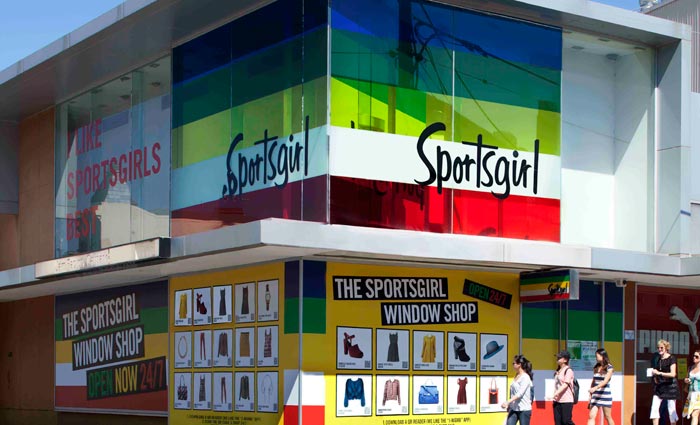
Point-of-sale supplier Active Display Group has praised its "trailblazing" client for the clever use of QR codes in inkjet printed decals to create Australia's first "window shop".
The retailer enlisted Active Display Group to print and install the decals, which feature images of its clothing products, each with a unique QR code so passing shoppers can scan the code with their smartphones and order clothes online.
According to Sportsgirl: "This brand-new concept will take the form of a shoppable window version of the Sportsgirl website, using their now established QR code system to shop from your mobile or iPad, providing a 24-hour interactive shopping experience from windows that will be updated weekly."
The first shop appeared last week at Sportsgirl’s Chapel St site in Melbourne, with a second pop-up being installed in Sydney today.
Active Display Group marketing manager Zita Watson told ProPrint that this creative concept came from the client. "Sportsgirl are definitely POS and visual merchandising trailblazers in using this technology in a totally new and exciting way."
She added that for other clients, Active Display Group was increasingly helping them come up with "innovative and forward-thinking point-of-purchase marketing solutions".
"QR codes have revolutionised the way that brands interact with their customers, and in recent times, we have integrated QR codes into our clients' in-store POS. However, we have not seen it used as a 'replacement to shopping in-store' as the Sportsgirl window concept does."
The Sportsgirl store windows will be refreshed with new offers every two weeks over the course of the six-week campaign.
The decals were produced at Active Display Group's Melbourne hub, using its its new super-wide Seiko V74 eco-solvent inkjet machine to print onto self-adhesive removable block-out vinyl with a matte laminate.
One of the first-ever examples of the window shop concept came courtesy of homegrown success story Wellcom Group, which produced similar campaigns for online fashion brand Net-A-Porter in London and New York last September.
A key difference in that campaign was that e-retailer Net-A-Porter doesn’t actually have bricks-and-mortar shops.
Another difference was that Wellcom used an "augmented reality" approach. Instead of a QR code, it added a digital watermark to the images. This meant the code was invisible to the naked eye and could only be scanned by downloading the Net-A-Porter app to a smartphone or iPad.
Chris Gawe, managing director of Wellcom London, told ProPrint: "There's a move away from QR codes recently as they are imposing on a design layout. The latest augmented reality options are either embedded in the image or the location or image is stored on a database ready to be scanned by a smartphone."
Comment below to have your say on this story.
If you have a news story or tip-off, get in touch at editorial@sprinter.com.au.
Sign up to the Sprinter newsletter
